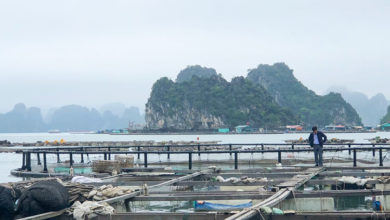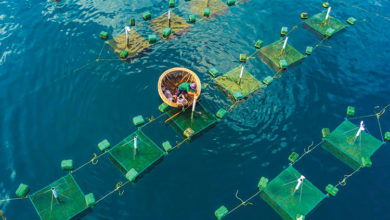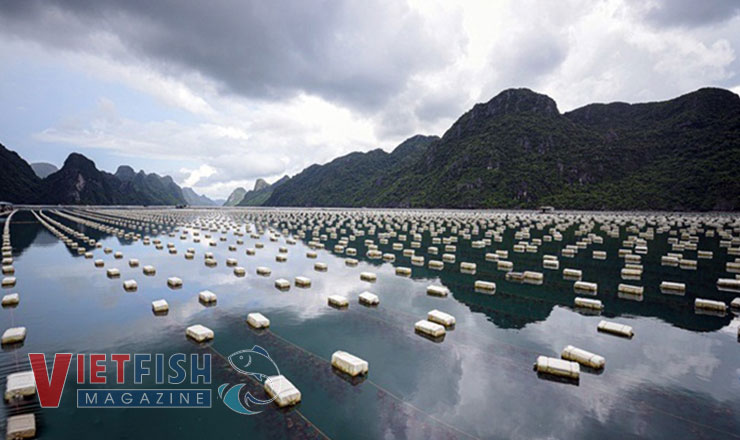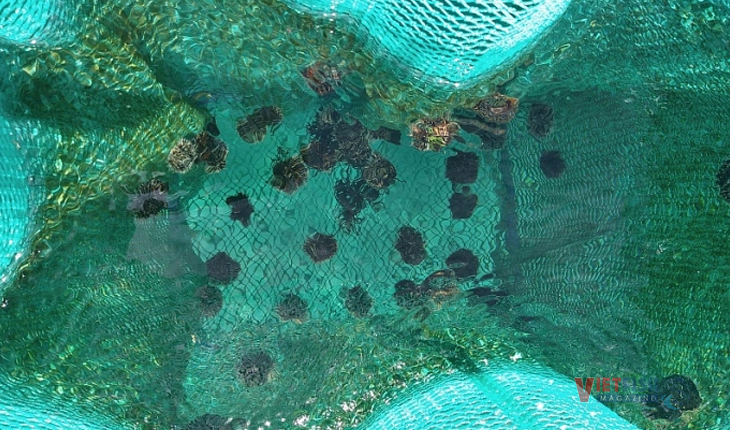Current landscape and sustainable pathways for marine fish farming in Vietnam
Vietnam's marine fish farming industry is undergoing a critical evaluation as Associate Professor Pham Duc Hung from Nha Trang University’s Aquaculture Institute examines existing challenges and outlines sustainable strategies for the future.
Expanding fish species and farming approaches
Vietnam’s marine fish farming has steadily diversified, focusing primarily on two categories: high-value predatory fish and more economical omnivorous fish. Predatory species, ideal for industrial farming, are raised in single-species cages or ponds due to their need for high-protein, animal-based diets. In contrast, omnivorous fish require less protein, making them suitable for multi-species ponds or small-scale coastal cages.
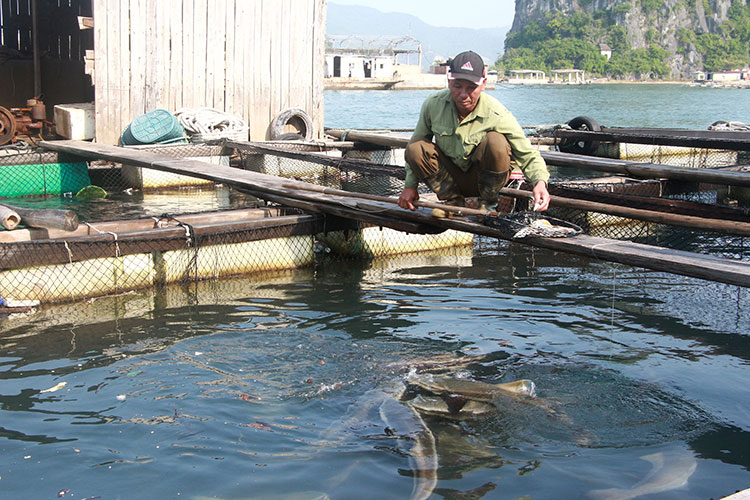
Wooden square cages, the most common type, are often situated in protected bays nearshore, measuring either 3x3x3 or 8x8x6 meters. Farmers feed fish manually with either industrial feed or low-cost fish. While predatory species in these wooden cages yield about 7–12 kg/m³, they face challenges due to high feed conversion ratios (FCRs) of 2–2.5. Moreover, wooden cages are susceptible to wave damage, limiting expansion opportunities.
To improve durability, HDPE or composite square cages are also used, offering better wave resistance but requiring higher maintenance and investment. Circular HDPE cages provide even greater wave resilience and environmental control, but their installation costs remain prohibitive for many farmers.
Single-species ponds are widely adopted for species like barramundi and red drum at an industrial scale, typically stocked at 2–7 fish per square meter and cultivated over 8–12 months, with yields reaching up to 50 tons per hectare. Mixed-species ponds, meanwhile, accommodate omnivorous fish with varied feeding habits.
Challenges in seed production
Seed production remains a significant challenge, as most broodstock are kept in offshore cages or ponds, relying on fresh fish, shrimp, and squid as feed. Hormones like HCG and LHRH-A are commonly used, with young fish fed rotifers, copepods, Artemia, and fresh fish. The industry’s substantial water usage and largely untreated wastewater discharge into the ocean highlight pressing environmental concerns.
Weak broodstock management has led to declining seed quality, compounded by inadequate investment in broodstock care. Hatcheries consume large volumes of water, while insufficient wastewater treatment poses ecological risks.
Additionally, species like cobia, groupers, and sea bass lack optimized feed options, with technical limitations in wooden cages contributing to disease outbreaks and environmental degradation.
Towards sustainable development
Achieving a sustainable future for Vietnam’s marine fish farming will require targeted policies for aquaculture zones, including financial support and insurance options. Developing high-quality, environmentally-friendly industrial feed can reduce the industry’s dependence on wild fish and enable offshore expansion, minimizing ecological impacts. Artificial seed production techniques also need refinement to lessen reliance on copepods and live feed.
Improved techniques across all stages—from broodstock management and fry transport to feeding and post-harvest processing—are essential. Research into new cage materials is key, especially for durable designs in open-sea, high-depth areas.
To enhance resilience against climate variability, Vietnam should prioritize nutrition and biological immunity research to help fry adapt to higher temperatures and reduce antibiotic use. Bioactive compounds can play a pivotal role in boosting immunity naturally, paving the way for more eco-friendly practices.
Finally, promoting multi-species farming models with complementary feeding behaviors could optimize resource use, creating a more sustainable, efficient ecosystem within each farming system.
VFM


